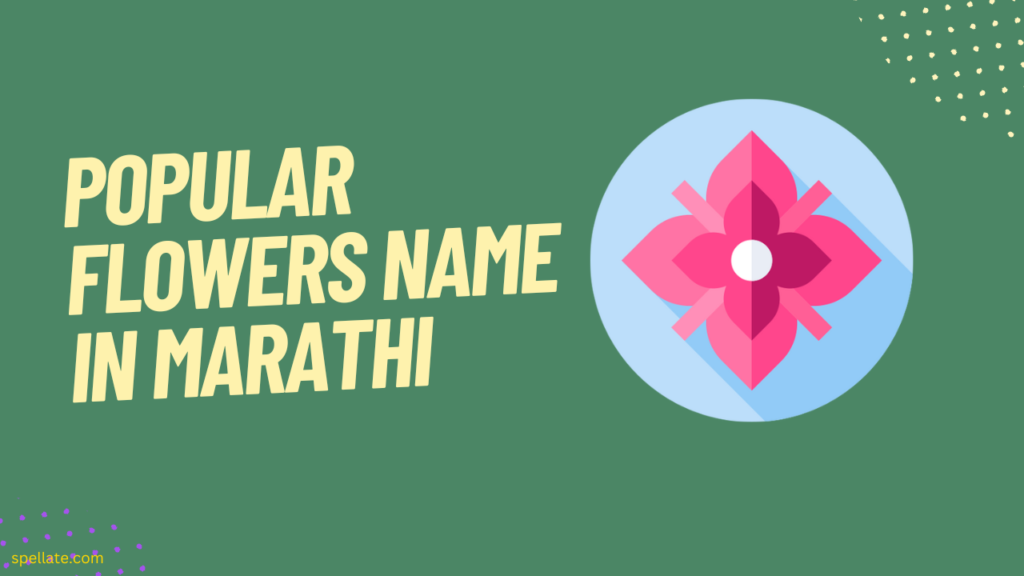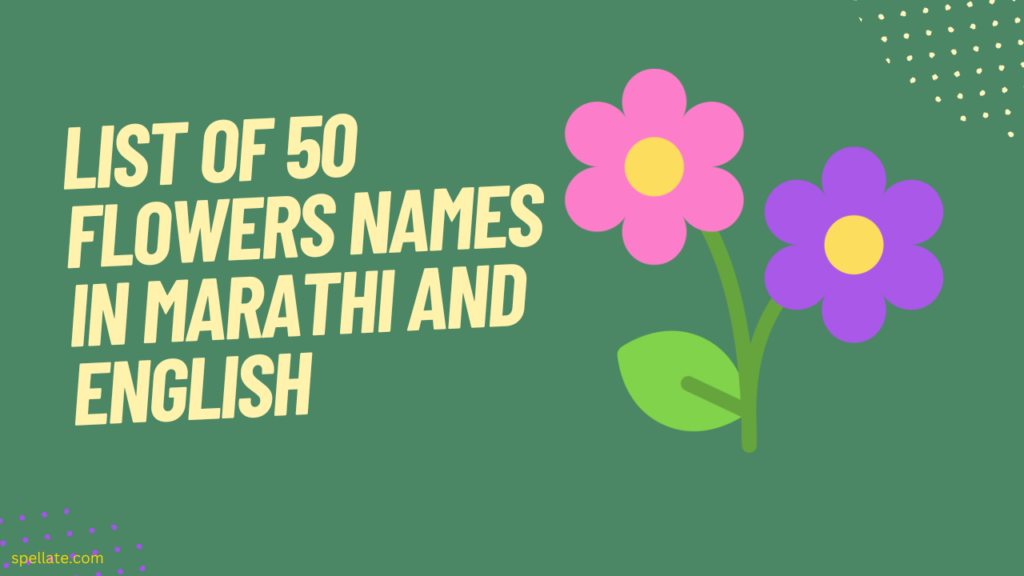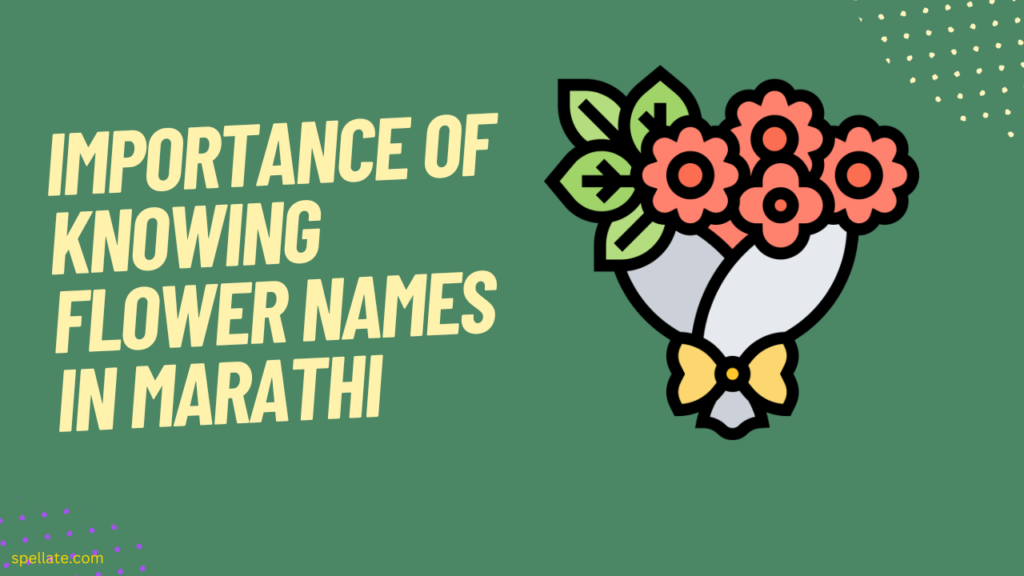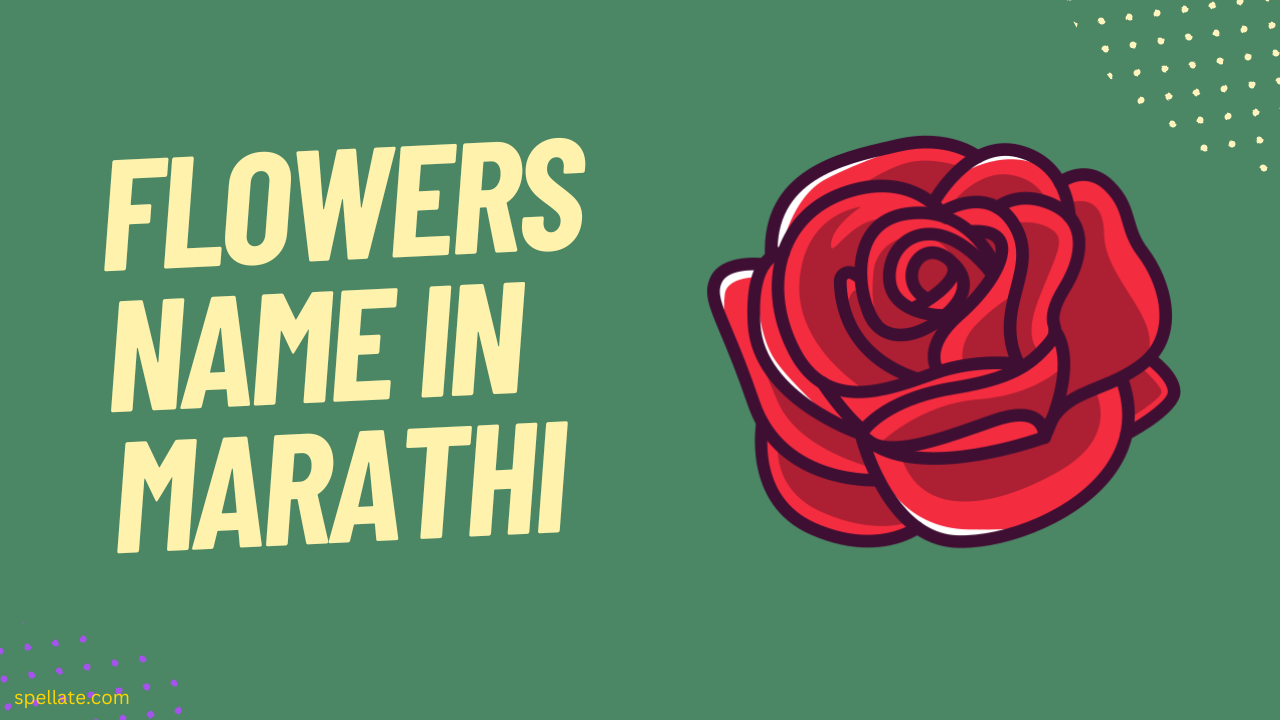Welcome to the enchanting world of flowers! Flowers have an extraordinary ability to captivate us with their vibrant colors, delicate petals, and alluring fragrances. In this guide, we embark on a journey to explore the diverse and mesmerizing world of flowers through the lens of Marathi, one of the prominent languages of Maharashtra, India.
Marathi, with its rich cultural heritage and deep-rooted connection to nature, has a plethora of unique names for various flowers, each carrying its own essence and significance. From the popular blossoms that grace our gardens to the lesser-known gems found in the heart of the countryside, we will unravel the Marathi names of a wide array of flowers, unearthing the cultural and traditional connotations attached to each.
Whether you’re a language enthusiast eager to expand your vocabulary or a nature lover seeking to deepen your understanding of the floral realm, this compilation promises to be a delightful and enlightening experience. So, come, let’s immerse ourselves in the scents and colors of “Flowers Name in Marathi” and discover the linguistic and botanical wonders that await us.
Popular Flowers name in Marathi

Marathi, being a rich and expressive language, has unique names for various popular flowers. Here are some of the well-known flowers name in Marathi:
1. Rose – गुलाब (Gulab):
The rose is one of the most iconic and beloved flowers worldwide, known for its exquisite beauty and alluring fragrance. In Marathi, it is called “गुलाब” (Gulab). The term “Gulab” is derived from the Persian word “گلاب” (Gulab), which means “rosewater.” The rose holds significant cultural and symbolic importance in various traditions, including in Maharashtra. It is often associated with love, beauty, and affection, making it a favorite choice for gifting on special occasions, especially on Valentine’s Day.
2. Jasmine – मोगरा (Mogara):
The Jasmine flower is renowned for its sweet and intoxicating fragrance. In Marathi, it is known as “मोगरा” (Mogara). The term “Mogara” is likely derived from the Sanskrit word “मल्लिका” (Mallika), which also means Jasmine. Mogara is an essential part of Indian culture and traditions, and its fragrant blooms are used in making garlands, adorning hair, and even for religious purposes. The delicate, white flowers have a deep cultural significance and are often associated with purity, simplicity, and sensuality.
3. Sunflower – सूर्यफुल (Suryaphul):
The Sunflower is a large, bright yellow flower that gets its name due to its striking resemblance to the sun. In Marathi, it is referred to as “सूर्यफुल” (Suryaphul), where “सूर्य” (Surya) means “sun,” and “फुल” (Phul) translates to “flower.” The sunflower is known for its vibrant appearance and its ability to turn and face the sun as it moves across the sky, a phenomenon known as heliotropism. It symbolizes adoration, loyalty, and longevity.
4. Marigold – झेंडू (Jhendu):
The Marigold is a cheerful and resilient flower, characterized by its bright orange, yellow, and golden blooms. In Marathi, it is called “झेंडू” (Jhendu). Marigolds hold immense significance in Indian culture and are widely used in religious ceremonies, festivals, and decorations. They are often strung together to create garlands or used to make vibrant rangoli patterns. The Marigold is associated with positive energy, auspiciousness, and prosperity.
5. Lily – कुंद (Kund):
The Lily is an elegant and graceful flower known for its large, showy petals and sweet fragrance. In Marathi, it is known as “कुंद” (Kund). The term “Kund” likely comes from the Sanskrit word “कुन्द” (Kunda). Lilies are prized for their beauty and are commonly used in floral arrangements and bouquets. They hold diverse symbolic meanings, including purity, virtue, renewal, and honor. Different varieties of lilies are found across the world, each with its own unique charm and significance.
6. Lotus – कमळ (Kamal):
The Lotus is a sacred and revered flower in Indian culture, symbolizing purity, enlightenment, and spiritual awakening. In Marathi, it is known as “कमळ” (Kamal). The term “Kamal” is derived from the Sanskrit word “कमल” (Kamala). The Lotus holds great significance in Hindu mythology and is often associated with deities like Goddess Lakshmi and Lord Vishnu. Its ability to bloom in muddy waters and rise above the surface to reveal its pristine beauty has made it a symbol of resilience and transformation.
7. Hibiscus – जष्टी (Jashti):
The Hibiscus flower is known for its vibrant and eye-catching petals, typically found in shades of red, pink, white, and yellow. In Marathi, it is called “जष्टी” (Jashti). Hibiscus flowers have various uses, including ornamental purposes, medicinal properties, and as offerings in religious rituals. The flower holds cultural significance in Maharashtra and is often offered to deities during prayers and festivals. The Hibiscus is also associated with beauty, femininity, and love.
8. Orchid – ऑर्किड (Orkid):
Orchids are exotic and diverse flowers known for their intricate and striking appearance. In Marathi, they are referred to as “ऑर्किड” (Orkid), a transliteration of the English word “orchid.” Orchids are highly prized for their uniqueness and are considered symbols of luxury, refinement, and rare beauty. In some cultures, they represent love, strength, and endurance. Orchids have inspired poets, artists, and enthusiasts alike, making them a fascinating subject of fascination and admiration.
9. Tulip – ट्यूलिप (Tulip):
The Tulip is a globally cherished flower known for its distinctive cup-shaped blooms and a wide range of colors. In Marathi, it is called “ट्यूलिप” (Tulip), adapting the English name. Although native to Central Asia, Tulips have found a special place in the hearts of people worldwide. They symbolize various emotions and sentiments, including love, elegance, and perfect beauty. The Tulip’s popularity and significance have led to numerous festivals dedicated to these enchanting flowers in different parts of the world.
You May Also Like
10. Daffodil – डॅफोडिल (Dafodil):
The Daffodil is a bright and cheerful spring flower known for its trumpet-shaped yellow or white blossoms. In Marathi, it is known as “डॅफोडिल” (Dafodil). Daffodils herald the arrival of spring, signifying renewal and new beginnings. They are considered symbols of hope, joy, and optimism. Daffodils are also associated with the celebration of various festivals and events, spreading their warmth and beauty wherever they bloom.
List of 50 Flowers names in Marathi and English

Marathi, the official language of Maharashtra, has its unique charm when it comes to describing natural elements like flowers. The list of 50 flowers name in Marathi will take you on a delightful linguistic adventure through vibrant colors and enchanting fragrances
| No | Marathi (मराठी) | English |
| 1 | गुलाब (Gulab) | Rose |
| 2 | मोगरा (Mogara) | Jasmine |
| 3 | सूर्यफुल (Suryaphul) | Sunflower |
| 4 | झेंडू (Jhendu) | Marigold |
| 5 | कुंद (Kund) | Lily |
| 6 | कमळ (Kamal) | Lotus |
| 7 | जष्टी (Jashti) | Hibiscus |
| 8 | ऑर्किड (Orkid) | Orchid |
| 9 | ट्यूलिप (Tulip) | Tulip |
| 10 | डॅफोडिल (Dafodil) | Daffodil |
| 11 | गुलमोहर (Gulmohar) | Flame of the Forest / Poinciana |
| 12 | गुलाबी (Gulabi) | Pink Rose |
| 13 | पारिजात (Parijat) | Night Jasmine / Coral Jasmine |
| 14 | बकुळ (Bakul) | Indian Medlar |
| 15 | रातराणी (Ratarani) | Night-blooming Cestrum |
| 16 | उबड हळद (Ubhad Halad) | Wild Turmeric |
| 17 | शेवंती (Shevanti) | Chrysanthemum |
| 18 | आप्सरा (Apsara) | Orchid Tree |
| 19 | रानचंदन (Ranchandan) | Sandalwood |
| 20 | नागचाफूल (Nagchaphool) | Snake Lily |
| 21 | सुपारीचंदन (Supari-chandan) | Betel Leaf Plant |
| 22 | चमेली (Chameli) | Arabian Jasmine |
| 23 | अशोक (Ashok) | Ashoka Tree |
| 24 | कन्नड (Kanher) | Oleander |
| 25 | करवंद (Karwand) | Pomegranate Flower |
| 26 | रजनीगंधा (Rajanigandha) | Tuberose |
| 27 | जाईफळ (Jaiphul) | Hibiscus |
| 28 | भुतकिसा (Bhutkisa) | African Marigold |
| 29 | बंगारवाडा (Bangarvada) | African Daisy / Cape Marigold |
| 30 | पान (Pan) | Betel Leaf |
| 31 | अंगूर (Angur) | Grape |
| 32 | दिव्यांग (Divyang) | Star Jasmine |
| 33 | सिंधूर (Sindur) | Red Hibiscus |
| 34 | भरड (Bharad) | Banyan Tree |
| 35 | बारशींगंधा (Barshinghda) | Raat Ki Rani (Night Queen) |
| 36 | कादंब (Kadamb) | Kadamb Tree |
| 37 | धतूरा (Dhatura) | Datura / Angel’s Trumpet |
| 38 | अक्कलकोट (Akkalkot) | Indian Cork Tree |
| 39 | कायफळ (Kayphal) | Bael / Wood Apple |
| 40 | गोकर्ण (Gokarn) | Cow’s Ear Plant |
| 41 | जुई (Jui) | Arabian Jasmine |
| 42 | जंभळी (Jambhali) | Hibiscus |
| 43 | सप्तपर्णी (Saptaparni) | Indian Devil Tree |
| 44 | तांबडी रक्तपुष्प (Tambdi Raktapushp) | Red Hibiscus (Wild) |
| 45 | कणा (Kana) | Indian Hemp |
| 46 | सप्तरंगी (Saptarangi) | Seven-colored Flower |
| 47 | तुळशी (Tulsi) | Holy Basil |
| 48 | अबोली (Aboli) | Crossandra |
| 49 | धेनूगंधा (Dhenugandha) | Celosia / Cockscomb |
| 50 | वढ (Vad) | Banyan Tree |
| 51 | संगवारा (Sangwara) | Rangoon Creeper |
| 52 | कंबर (Kambar) | Oleander |
| 53 | चुम्बी (Chumbi) | Flame Lily |
| 54 | जुईचंदन (Juichandan) | Juhi / Indian Jasmine |
Importance of knowing flower names in Marathi

Knowing flowers name in Marathi holds several significant advantages, contributing to one’s cultural understanding, linguistic development, and ability to connect with nature. Here are some of the key importance of knowing flower names in Marathi:
Cultural Appreciation: Flowers play a vital role in Indian culture, including Marathi culture. Knowing the names of flowers in Marathi allows individuals to appreciate and understand the significance of these flowers in various religious, traditional, and festive contexts. It helps in participating more actively in cultural events and rituals.
Local Communication: When interacting with Marathi speakers, being familiar with flowers name in Marathi facilitates smoother and more effective communication. It enables individuals to engage in conversations, express themselves better, and build stronger connections with Marathi-speaking communities.
Preserving Regional Identity: Language and culture are closely intertwined. Knowing flowers name in Marathi helps in preserving and promoting the regional identity of Maharashtra. It shows respect for the local language and its unique expressions, contributing to the preservation of linguistic diversity.
Gardening and Horticulture: For gardening enthusiasts or horticulturists in Maharashtra, knowing the names of flowers in Marathi is essential. It aids in understanding plant characteristics, care requirements, and cultivation techniques specific to the region’s climate and soil conditions.
Nature Appreciation: Learning flower names in Marathi enhances one’s connection with nature. When you can identify and name flowers in the local language, you develop a deeper appreciation for the flora in your surroundings. It encourages people to observe and learn more about the natural world.
Educational Value: For students studying Marathi or those interested in linguistics, flower names offer a valuable vocabulary resource. Knowing these names enriches one’s language skills, expands vocabulary, and promotes linguistic fluency in Marathi.
Enhancing Travel Experience: When traveling in Maharashtra or regions where Marathi is spoken, knowing flowers name in Marathi can be advantageous. It enables travelers to better navigate local markets, identify flowers in gardens or parks, and engage with locals more easily.
Celebrations and Festivals: Flowers are integral to many celebrations and festivals in India. Knowing flowers name in Marathi allows individuals to understand the symbolic significance of specific flowers used during different occasions and ceremonies.
Expressing Emotions: Flowers have long been associated with conveying emotions and feelings. Knowing the names of flower in Marathi allows individuals to express themselves more intimately and emotionally through the language of flowers in Marathi-speaking communities.
Fostering Inclusivity: Learning flowers name in Marathi is an act of inclusivity and respect for the culture and traditions of Maharashtra. It demonstrates a willingness to embrace and understand diverse languages and cultural practices.
Tips for learning and remembering Marathi flower names
Learning the names of flowers in Marathi can be a fun and enriching experience. Whether you are an avid gardener, a nature enthusiast, or simply someone interested in expanding your vocabulary, knowing the Marathi names of flowers can add depth to your interactions with plants. Here are six tips to help you learn and remember these beautiful floral names.
- Firstly, immerse yourself in the language by reading books or watching movies in Marathi. This exposure will familiarize you with common words and phrases related to nature, including flower names.
- Secondly, make use of technology by downloading language-learning apps that specialize in teaching regional languages like Marathi. These apps provide interactive exercises and quizzes that can help reinforce your memory of flower names over time.
- Thirdly, connect with native Marathi speakers or join language exchange groups to practice conversing in Marathi. Engaging in conversations about flowers and asking for their Marathi names will not only enhance your vocabulary but also give you a chance to interact with the local culture.
- Fourthly, create visual aids such as flashcards or posters displaying the Marathi names of different flowers. Place them around your living space or workspace so that you can frequently refer to them and reinforce your memory.
- Fifthly, immerse yourself in Marathi literature or media related to flowers. Read books or articles about floral species and their significance in Marathi culture. Watch movies or documentaries that showcase the beauty of flowers and their importance in local traditions. By exposing yourself to these resources, you will not only expand your vocabulary but also deepen your understanding of the cultural context surrounding flower names.
Final Thoughts
In conclusion, learning the Marathi names of flowers in Marathi can be a fascinating journey into the rich culture and heritage of Maharashtra. By understanding and using these names, we not only enhance our vocabulary but also deepen our appreciation for the beauty of nature. Whether you are a language enthusiast, a traveler exploring Maharashtra, or simply someone who enjoys the enchantment of flowers, taking the time to learn their names in Marathi can bring you closer to this vibrant and diverse state.
So go ahead, immerse yourself in the world of Marathi flower names, and let their beauty and significance captivate you. Start by picking your favorite flower and discovering its name in Marathi – you might be pleasantly surprised by the beauty of its sound on your tongue!
FAQs
What are the famous flowers of Maharashtra?
The famous flowers of Maharashtra include the Gulmohar, Marigold, Orchids, Bougainvillea, Sunflower, Jasmine, Hibiscus, and Lotus.
Are Marigolds widely cultivated in Maharashtra?
Yes, Marigolds are extensively grown and used for religious ceremonies, decorations, and garlands during festivals like Diwali and Ganesh Chaturthi in Maharashtra.
Where can I find lotus flowers blooming naturally in Maharashtra?
Lotus flowers can be spotted blossoming naturally in ponds, lakes, and wetlands across different parts of Maharashtra such as Lonar Lake and Kaas Plateau.
